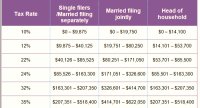Mastering Risk Management in Forex Trading: Essential Tips and Techniques
Forex trading is often portrayed as a high-reward endeavor where fortunes can be made in the blink of an eye. The key to longevity and success in forex trading lies not only in making profitable trades but also in mastering risk management. In this comprehensive exploration, we will delve deep into the world of risk management in forex trading, uncovering essential tips and techniques to help traders safeguard their capital and achieve sustainable success.
Understanding the Importance of Risk Management
It is the practice of implementing strategies and tools to protect your trading capital from excessive losses. While it doesn’t guarantee profits, effective risk management ensures that you can survive and continue trading, even when faced with inevitable losing streaks. Here’s why risk management is crucial in forex trading:
Capital Preservation: The primary goal of risk management is to preserve your trading capital.
Emotional Control: Risk management strategies help maintain emotional control during trading.
Long-Term Viability: Successful trading is not about winning every trade; it’s about achieving consistent profitability over time. Risk management ensures that you can continue trading through both winning and losing periods.
Flexibility: Effective risk management provides flexibility in adapting to changing market conditions. It allows you to adjust your position sizes and strategies as market dynamics evolve.
Essential Risk Management Techniques and Tips
Set Stop-Loss Orders: A stop-loss order is a predefined price level at which your trade will automatically be closed to limit potential losses. Always use stop-loss orders to manage risk.
Position Sizing: Never risk more than a small percentage (typically 1-2%) of your trading capital on a single trade.
Diversify Your Portfolio: Avoid putting all your capital into one trade or currency pair. Diversification can spread risk and protect your capital from significant drawdowns.
Risk-Reward Ratio: Assess the risk-reward ratio of each trade before entering.
Avoid Overtrading: Overtrading, or trading too frequently and with large position sizes, can deplete your capital quickly. Stick to a disciplined trading plan that specifies the number of trades you can take in a given time frame.
Understand Correlations: Be aware of correlations between currency pairs. Trading multiple pairs that are highly correlated can expose you to additional risk.
Continuous Education: Stay informed about market developments, trading strategies, and risk management techniques. The more you know, the better equipped you’ll be to manage risk effectively.
Regularly Review and Adjust: Periodically review your trading performance and risk management strategies. Adjust your approach if you notice any patterns of excessive risk-taking or underperformance.
Stay Informed About Economic Events: Economic news releases can significantly impact currency markets. Be aware of the economic calendar and refrain from trading during highly volatile periods if you’re uncertain about potential market reactions.
Risk Limits for Each Trading Session: Set a daily or weekly risk limit to prevent substantial losses in a single trading session. If you reach your limit, stop trading for the day or week to avoid emotional decision-making.
Risk-Free Testing: Before trading a new strategy or indicator, test it on a demo account or use a risk-free environment to gain confidence in its effectiveness.
Utilize Trailing Stops: Trailing stops allow you to lock in profits as a trade moves in your favor. They automatically adjust the stop-loss level to follow the price.
Consider Hedging: In certain situations, hedging can be a risk management tool. It involves taking offsetting positions to protect against adverse market movements.
Stay Patient: Risk management requires patience. Avoid the temptation to take excessive risks when market conditions are not favorable or when there’s uncertainty.
Maintain a Trading Journal: Keep a detailed trading journal that records not only your trades but also your thought process and emotions. This journal can help you identify areas for improvement in your risk management.
Be Prepared for Drawdowns: Even the best traders experience drawdowns (periods of losses). Mentally prepare for these phases and have a plan to manage them without compromising your long-term viability.
Seek Professional Guidance: If you’re new to trading or struggling with risk management, consider seeking guidance from a mentor, trading coach, or financial advisor who specializes in forex.
21. Risk Management Automation: Consider using trading platforms or tools that offer automated risk management features. These can include automatic stop-loss orders, trailing stops, and take-profit levels that help execute your risk management plan more efficiently.
22. Stay Informed About Central Bank Policies: Central bank decisions and policy announcements can have a significant impact on currency values. Stay informed about these events, as they can influence your risk management decisions.
23. Keep an Eye on Market Sentiment: Market sentiment, often driven by news and events, can shift quickly. Be vigilant and adjust your risk management strategies when you sense a change in market sentiment that could affect your trades.
24. Risk Mitigation Through Diversification: Beyond diversifying within the forex market, consider diversifying your overall investment portfolio. Holding assets in different asset classes, such as stocks, bonds, and commodities, can provide an extra layer of risk protection.
25. Avoid Large Gaps: Over weekends or during major news releases, currency pairs can experience significant gaps in price when the market opens. To mitigate this risk, either avoid holding positions over such periods or use guaranteed stop-loss orders, if available.
26. Use Guaranteed Stop-Loss Orders Cautiously: Guaranteed stop-loss orders can protect your trades from slippage during volatile market conditions, but they typically come at a premium cost. Assess whether the added protection justifies the expense.
27. Trade Liquid Pairs: Stick to trading the major currency pairs, as they tend to be more liquid and have narrower spreads. Liquidity can help you execute trades more smoothly and at the desired price levels.
28. Understand the Impact of Timeframes: Different timeframes can lead to varying levels of risk. Shorter timeframes may result in more frequent trades and tighter stop-loss levels, while longer timeframes can require more considerable stop-loss distances.
29. Stay Calm During Drawdowns: Drawdowns are an inevitable part of trading. Maintain composure and avoid making impulsive decisions to recoup losses. Stick to your risk management plan, and remember that discipline pays off in the long run.
30. Keep an Emergency Fund: Having an emergency fund outside of your trading capital is a wise financial strategy. This fund can cover personal expenses during difficult trading periods, reducing the pressure to take excessive risks.
31. Maintain Realistic Expectations: Understand that forex trading, like any investment, carries inherent risks. Expect to wait to win every trade or achieve consistent profits. Realistic expectations can help you manage emotions and adhere to your risk management plan.
32. Continuously Monitor and Adjust: Market conditions change, and your risk management plan should evolve with them. Regularly assess the effectiveness of your strategies and adjust them as needed to stay aligned with your trading goals.
33. Learn from Your Mistakes: Analyze losing trades and mistakes in risk management. Identify patterns or errors, and use these experiences as learning opportunities to improve your trading approach.
34. Avoid Unverified Tips and Gurus: Be cautious of unverified trading tips or following self-proclaimed trading gurus without a proven track record. Base your risk management decisions on sound principles rather than unfounded advice.
35. Stay Disciplined: Discipline is the bedrock of successful risk management. Adhere to your risk parameters, even when emotions tempt you to deviate. Successful trading requires consistent discipline.
Conclusion
Mastering risk management is an essential skill for every forex trader. It goes beyond analyzing charts and making trades; it’s about protecting your capital and ensuring your long-term success. Effective risk management techniques and tips, combined with discipline and continuous learning, are the keys to navigating the complex and often volatile world of forex trading with confidence and resilience. Remember that while risk management may not guarantee profits, it is the cornerstone of a sustainable trading career, allowing you to weather the storms and emerge as a more resilient and successful trader.


